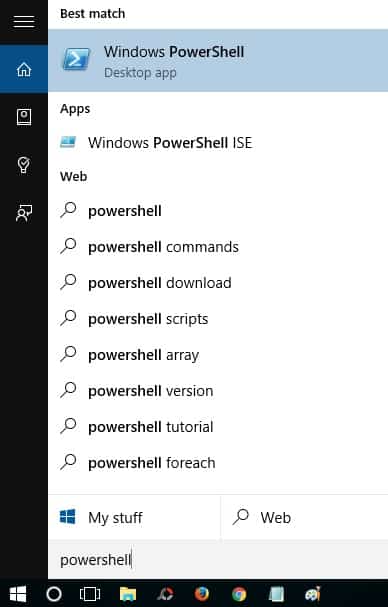Windows 10 comes with a huge number of built-in apps and in addition, to those, even the bloatware apps installed by the PC manufacturer can also be seen in the All Apps section in the Start menu. If you are bored with these annoying built-in apps, you can uninstall them. But Microsoft doesn’t allow you to uninstall these built-in apps in the usual way which we follow.
Hopefully, these apps don’t consume much space on your disk. So you can ignore them. But if you still want to uninstall these built-in apps, we will guide you through the uninstallation process. As discussed above, we can’t just uninstall a few apps directly. So let’s deal with them differently in this post on uninstalling Windows 10 built-in apps.
Uninstall Built-in Apps on Windows 10
Well, as said above few apps can be removed directly. Open the Start menu click the All apps section and right-click on the app you want to uninstall. Click on the Uninstall option to remove it. If you use a touch screen, then long-press on the app to get these options.
But only a few apps like Microsoft Solitaire Collection, Money, News, Sports, Get Office, etc., can be uninstalled in this way. You can follow this trick to uninstall the bloatware apps installed by the PC manufacturer.
Using PowerShell
If you can’t uninstall the apps using the above method, follow this method to get it done. You can uninstall all the built-in apps using the PowerShell. But apps like Microsoft Edge and Cortana will show an error message when you try to uninstall them. You need to follow a different approach for these apps. Let’s see how to uninstall the built-in apps other than Cortana and Microsoft Edge.
- Click the Start menu and search for PowerShell. Now right-click on the PowerShell app in the result list and select the Run as administrator option.

- A prompt will appear on the screen asking for permission. Then click the OK button to grant admin access.
- Now copy and paste the below commands in the PowerShell windows and hit the Enter key. Copy the command you want to uninstall from your Windows 10 PC.

To uninstall 3D Builder copy and paste the below command in the PowerShell window.
3D Builder:
Get-AppxPackage *3dbuilder* | Remove-AppxPackage
Similarly for other apps.
Alarms and Clock:
Get-AppxPackage *windowsalarms* | Remove-AppxPackage
Calculator:
Get-AppxPackage *windowscalculator* | Remove-AppxPackage
Camera:
Get-AppxPackage *windowscamera* | Remove-AppxPackage
Calendar and Mail:
Get-AppxPackage *windowscommunicationsapps* | Remove-AppxPackage
Get Office:
Get-AppxPackage *officehub* | Remove-AppxPackage
Groove Music:
Get-AppxPackage *zunemusic* | Remove-AppxPackage
Maps:
Get-AppxPackage *windowsmaps* | Remove-AppxPackage
Get Skype:
Get-AppxPackage *skypeapp* | Remove-AppxPackage
Microsoft Solitaire Collection:
Get-AppxPackage *solitairecollection* | Remove-AppxPackage
Money:
Get-AppxPackage *bingfinance* | Remove-AppxPackage
Movies & TV:
Get-AppxPackage *zunevideo* | Remove-AppxPackage
News:
Get-AppxPackage *bingnews* | Remove-AppxPackage
OneNote:
Get-AppxPackage *onenote* | Remove-AppxPackage
People:
Get-AppxPackage *people* | Remove-AppxPackage
Phone Companion:
Get-AppxPackage *windowsphone* | Remove-AppxPackage
Photos:
Get-AppxPackage *photos* | Remove-AppxPackage
Store:
Get-AppxPackage *windowsstore* | Remove-AppxPackage
Sports:
Get-AppxPackage *bingsports* | Remove-AppxPackage
Voice Recorder:
Get-AppxPackage *soundrecorder* | Remove-AppxPackage
Weather:
Get-AppxPackage *bingweather* | Remove-AppxPackage
Xbox:
Get-AppxPackage *xboxapp* | Remove-AppxPackage
Install the Built-in Apps
If you want to bring those uninstalled built-in apps, copy and paste the below code in the PowerShell window and press the Enter key. It will take some time to install these apps. Don’t worry even if you get any errors, restart your PC and you can find the built-in apps in the Start menu.
Get-AppxPackage -AllUsers| Foreach {Add-AppxPackage -DisableDevelopmentMode -Register “$($_.InstallLocation)\AppXManifest.xml”}
If you find this post useful, do share it with your friends. Let us know your comments and suggestions in the comment section.